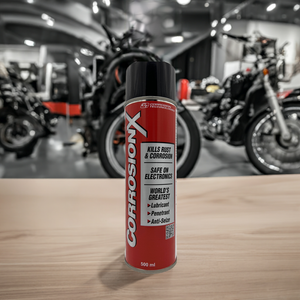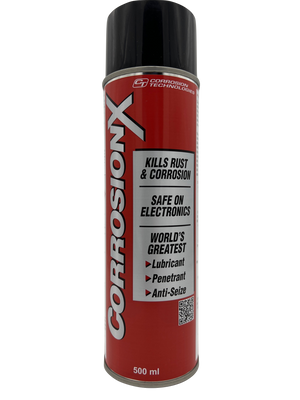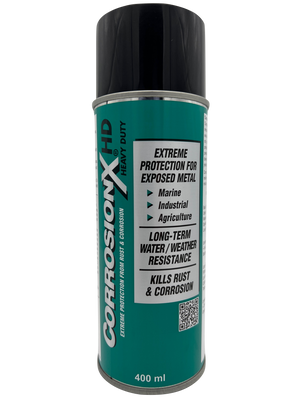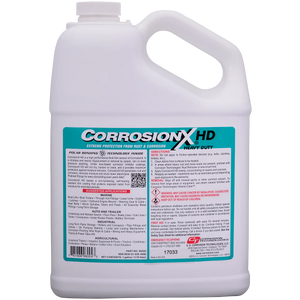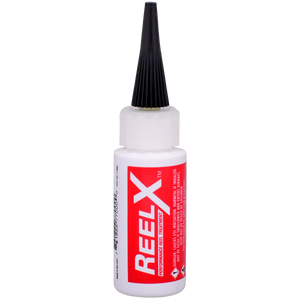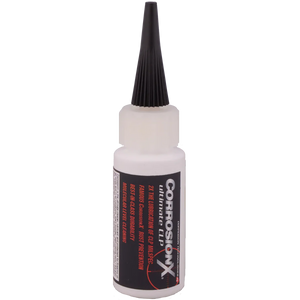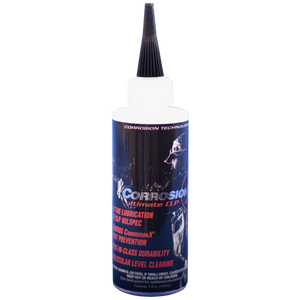Have you ever walked through a museum and found yourself gazing at a centuries-old musket, wondering how such a marvel of old-world craftsmanship still looks so pristine? Or perhaps you’ve seen an ancient revolver in someone’s private collection and thought, “How do they keep that metal gleaming despite its age?” If you’ve ever been curious about how to preserve historical weapons—whether you’re a museum professional, a history buff, or an antique gun collector—this article is for you. In this deep dive, we’ll explore why gun oil is a linchpin in preserving the condition, functionality, and long-term worth of antique firearms and other historical weapons. You’ll learn how specialized oils like CorrosionX for Guns make a world of difference, and we’ll offer tips on everything from storage environments to maintenance routines. Ready to travel back in time with us and uncover the secrets of artifact conservation? Let’s jump right in!
The Timeless Appeal of Historical Weapons
Windows into the Past
Imagine standing in front of a venerable Civil War musket or a centuries-old flintlock pistol. You’re not just looking at an old hunk of metal; you’re staring into a time machine, an artifact that offers a snapshot of cultural and technological evolution. Historical weapons are more than intriguing collectables or museum showpieces. They are storytellers, each bearing the scars and marks that reflect pivotal moments in human history—from revolutionary wars to territorial skirmishes and beyond.
For many people, these weapons carry a mystique that goes well beyond their utilitarian beginnings. They evoke images of old battlegrounds, the smell of black powder, and the echo of commands shouted on the front lines. Holding a well-preserved historical firearm can feel like holding a piece of history right in your hands. Whether you’re a dedicated curator, a passionate collector, or a casual enthusiast, the question quickly becomes: How do we protect these priceless relics from the ravages of time?
A Balancing Act Between Function and Artifact
When it comes to historical weapons, not all of them remain in firing condition. Some are purely ceremonial or collector’s items, while others are still fully operational. Yet even non-functional weapons require maintenance and protection. Why? Because metals, wood, and other materials don’t stop aging just because the weapon is no longer used in battle. If anything, static display can sometimes accelerate deterioration if the conditions are not correctly managed.
Preserving these artifacts is a balancing act. On one hand, you want them to be as authentic as possible—down to the original patina that can actually add to their value. On the other hand, you need to stave off the corrosion, rust, and other forms of decay that can turn a proud piece of history into a mere heap of metal fragments. Enter the critical role of gun oil—the unsung hero in the world of antique firearm preservation.
Understanding the Vulnerabilities of Antique Firearms
The Toll of Time: Corrosion and Decay
Let’s face it: time is not kind to metals. Oxidation, rust, and other forms of corrosion can turn a once-gleaming steel barrel into a pitted, flaky shadow of its former self. And it’s not just about metal. Wood stocks, leather straps, and other organic components are just as vulnerable—especially if stored in conditions where humidity levels fluctuate wildly.
- Oxidation: When oxygen combines with iron or steel, you get rust. Over time, even minimal exposure can lead to spots or streaks of corrosion. If left untreated, these spots can worsen until the entire piece is compromised.
- Humidity Fluctuations: Going from a damp basement to a dry attic to a climate-controlled display can wreak havoc on metals and wood alike. Moisture seeps into microscopic pores and cracks, setting the stage for rust, mold, or even dry rot in wooden sections.
- Pollutants: Airborne contaminants, like sulfur dioxide or chlorides (especially in coastal environments), can accelerate corrosion. Museums and collectors often overlook these microscopic threats, focusing only on visible factors like dust and grime.
The Hidden Dangers of Improper Storage
It’s tempting to stash a historical rifle in a display case and call it a day, but storage is more nuanced than that. Improper storage doesn’t just hamper the piece’s appearance; it can contribute to unseen, cumulative damage.
- Temperature Extremes: Very high or very low temperatures can warp metal and wood. Rapid temperature swings can also cause condensation inside the weapon’s workings, kickstarting rust development in places you can’t easily see.
- Lack of Ventilation: Stagnant air can trap moisture around your firearm, creating a microclimate perfect for corrosion. If your storage box or display case isn’t designed for breathability, you could be unintentionally sealing in moisture.
- Contact with Reactive Materials: Certain linings, foams, or chemicals can interact with metal, especially if they degrade over time and release harmful substances. Even the type of packaging or wrapping used can be detrimental if it’s not acid-free or inert.
When it comes to preventing these damages, gun oil plays a leading role. A high-quality oil offers a protective barrier against environmental hazards and lubricates moving parts to prevent wear and tear—whether you shoot your antique weapon for demonstration or simply keep it as a static display.
The Role of Gun Oil in Preservation
A Shield Against the Elements
You might think of gun oil as simply a lubricant, but it’s more like a suit of armor for your antique firearms. By coating the metal surfaces with a thin, even layer of oil, you create a barrier that stops moisture from directly contacting the metal. Essentially, you’re cutting off the chemical pathway that leads to rust. If you’ve ever wondered why militaries worldwide emphasize regular oiling, it’s because that thin oil film can be the difference between a well-maintained piece and a corroded mess.
But not all gun oils are created equal. Some oils can evaporate over time, leaving behind a sticky residue that actually attracts dust. Others are too thin and don’t offer enough protective heft. That’s why specialists often turn to advanced formulations like CorrosionX for Guns, specifically engineered for deep penetration and lasting protection.
Lubrication and Functionality
Even if you never plan to fire your antique firearm, lubrication remains crucial. Historical weapons, like modern ones, often contain moving parts—triggers, locks, cocks, loading mechanisms, or rotating cylinders—that can seize up if they’re left in a dry state for too long. Think of gun oil as the “fountain of youth” for these functional components, keeping them from grinding against each other and wearing down more quickly.
- Trigger Assemblies: A lightly lubricated trigger assembly allows the mechanism to move with ease and reduces friction.
- Bolts and Slides: In antique rifles or semi-automatic pistols, these parts can corrode or become jammed if not treated.
- Rotating Cylinders: Revolvers, especially older ones, rely on free-moving cylinders. Any moisture-induced rust or residue can lock the cylinder in place.
Beyond the practical reasons, there’s also an authenticity factor at play. Historical accuracy isn’t just about how something looks, but also about its functional integrity. A well-preserved, well-oiled weapon, even if it stays behind glass, has far more historical authenticity than one that’s rusted into a single unmovable hunk of metal.
Spotlight on CorrosionX for Guns
Why CorrosionX Stands Out
If you’ve browsed the market for firearm maintenance products, you’ve probably seen countless oils, sprays, and lubricants, each claiming to be the best. So what makes CorrosionX for Guns a standout choice? For starters, it doesn’t just sit on the surface. CorrosionX is known for its deep-penetrating formula, meaning it seeps into the microscopic pores of metal, coating areas that other oils might leave exposed. This advanced formulation creates a long-lasting bond that resists being wiped away or evaporated over time.
Additionally, CorrosionX excels at:
- Moisture Displacement – It repels water, essentially pushing it out of micro-crevices where it might otherwise be trapped.
- Rust Neutralization – It not only prevents new rust from forming but can also help halt existing corrosion, providing a stable environment.
- Minimal Residue – Unlike some oils that leave a thick, gummy layer, CorrosionX for Guns aims for a clean, protective finish that doesn’t attract dust.
Proven Reliability in Tough Environments
CorrosionX products are trusted by major military organizations and government agencies, including the U.S. military and NATO forces. This isn’t just a marketing boast; it means the product meets stringent standards for performance, safety, and reliability.
In many ways, antique firearms face more rigorous preservation requirements than modern firearms. After all, your new sporting rifle might only need routine cleaning after a day at the range. But a musket from the 1700s or a vintage World War II rifle in a museum faces the silent onslaught of time, climate, and environmental contaminants every day. The fact that CorrosionX has proven itself in settings ranging from humid jungles to arid deserts underscores its ability to protect your historical collection, whether it’s displayed in a climate-controlled gallery or stored in a less-than-ideal environment.
Museum-Level Maintenance Requirements
Regular Inspection and Thorough Documentation
Ever wonder how museums keep their artifacts looking immaculate year after year? The secret isn’t just about having a fancy display case. It’s about regular inspections and documentation. Museum curators often follow a strict schedule, logging any changes in condition—rust spots, cracks, or signs of wear—and addressing those issues promptly.
- Inspection Checklists: They include everything from the condition of the metal (has rust developed?) to the state of the wood (any cracking or warping?).
- Photographic Documentation: High-resolution photos help track incremental changes over time, making it easier to catch early signs of degradation.
- Controlled Cleaning: Instead of waiting for heavy buildup, museums use gentle cleaning methods at regular intervals. This is where gun oil like CorrosionX comes in, applied as needed to keep everything in top shape.
Controlling Temperature and Humidity
For many museums, maintaining stable temperature and humidity is non-negotiable. Why? Because fluctuations create stress on metals and organic materials (like wood and leather). Rapid changes in humidity can lead to condensation, which is a direct ticket to corrosion city. Too-dry environments, on the other hand, can cause wooden components to shrink or crack.
- Ideal Humidity Range: Often aimed between 40% and 50% relative humidity, though exact preferences can vary based on the material.
- Temperature Regulation: Usually kept around 68–72°F (20–22°C). Extremes in temperature speed up chemical reactions, including oxidation.
- Air Filtration: Museums also filter out airborne pollutants, which can accelerate corrosion. Even the most diligent oiling won’t help much if the environment is laden with corrosive chemicals.
When you’re dealing with your own collection—whether it’s a single gun or a trove of antique arms—try to mirror these professional standards as much as possible. Good ventilation, moderate climate control, and high-quality gun oil are pillars of proper preservation.
Best Practices for Applying Gun Oil
Cleaning and Preparation
Before you even think about slathering oil on your historical weapon, thorough cleaning is key. Dust, dirt, and even old oil residues can prevent the new oil from adhering properly to the metal. If there’s old rust or corrosion, you may need to remove it gently using suitable tools or mild rust-removal methods. However, be cautious. Overzealous cleaning can strip away valuable patina or historical marks. In museum settings, conservators often use soft brushes, cotton swabs, and specialized solutions to minimize the risk of damage.
- Mild Solvents: Opt for solvents specifically designed for antique firearms. Harsh chemicals might damage wood or finishes.
- Lint-Free Cloth: To avoid leaving behind fibers, use lint-free cloths or even microfiber towels.
- Personal Protective Equipment (PPE): Gloves are a must, not just for your own safety but also to prevent oils from your skin from transferring onto the metal.
Even Distribution and Careful Attention
Once the weapon is clean, it’s time to apply the oil. The goal is to create a uniform layer that covers every nook and cranny without flooding the piece. Too much oil can attract dust; too little leaves metal vulnerable to oxidation.
- Small Amount, Big Impact: Start with a small amount on a clean, lint-free cloth or applicator. You can always add more if needed.
- Focus on High-Risk Areas: Pay special attention to corners, crevices, and moving parts. These spots are prime candidates for rust to take hold.
- Allow Time to Set: Some oils need a few minutes to soak into the metal’s microscopic pores. This is particularly true for deep-penetrating products like CorrosionX for Guns.
- Wipe Away Excess: Using a dry cloth, gently remove any extra oil to prevent buildup or drips.
Long-Term Storage Tips
Your weapon is now freshly oiled, but your job isn’t over yet. If you’re planning on long-term storage, the environment you choose is almost as critical as the oil itself.
- Climate Control: Try to store your firearm in a stable environment—if not a full-on climate-controlled room, at least somewhere free from extreme humidity or temperature swings.
- Avoid Reactive Materials: Steer clear of foams or fabrics that can degrade or release harmful chemicals over time. Instead, look for storage cases specifically made for firearms or archival-grade materials.
- Periodic Check-Ins: Even if you’re not reapplying oil frequently, open the case or safe every few months to inspect the firearm. Look for any changes in color, texture, or odor.
Remember: preservation is an ongoing commitment. Just because you’ve oiled it once doesn’t mean your antique is immune to future damage.
The Importance of Authentic Preservation
Historical weapons aren’t just lumps of metal; they are time capsules that carry emotional, cultural, and educational value. Preserving them goes beyond personal interest or aesthetic appeal. When you keep these weapons in good shape, you’re safeguarding a tactile link to history. Museums often say they want visitors to “touch the past,” and while you might not literally let people handle a centuries-old firearm, preserving its authenticity and condition provides the next best thing.
Moreover, authentic preservation ensures that any historical markings or manufacturer’s stamps remain visible. These small details can be crucial for historians, collectors, or even genealogists tracing a family heirloom. A well-maintained artifact retains its provenance—its documented history—which can drastically enhance both its financial and cultural worth.
Think of it this way: neglecting a historical weapon is like throwing away pages from a rare, original edition of a book. You lose irreplaceable pieces of a larger story. Conversely, using proper preservation techniques is akin to carefully bookmarking each chapter, ensuring future generations can still read, learn from, and appreciate the complete narrative.
Frequently Overlooked Factors in Preservation
You’ve got your climate-controlled space, you’re armed (pun intended) with the right oil, and you’re faithfully checking your firearms on schedule. But what about the nuances you might be missing?
-
Display Cases with UV-Protective Glass
If you’re displaying your antique in a well-lit room or a place with natural sunlight, UV rays can gradually degrade metal and wood finishes. While it’s more often discussed in the context of paintings or documents, UV damage to firearms can manifest subtly as discoloration or accelerated wear on organic materials. -
Handling Procedures
Did you know the oils and salts in your skin can accelerate corrosion? Wearing gloves when handling historical firearms is standard practice in museums to keep those corrosive elements at bay. Even a single fingerprint, if left unchecked, can etch itself into the metal over time. -
Rotating Display Items
If you’re in charge of a collection, consider rotating items in and out of display. This prevents a single piece from being subjected to constant environmental stressors like light, temperature changes, or the minor vibrations caused by foot traffic or building movement. -
Understanding Wood Preservation
Many antique firearms incorporate wooden stocks or handles. While gun oil helps protect metal parts, wood preservation often calls for different products. Keeping the wood portion in a stable humidity range is critical. If it gets too dry, it could crack; too humid, and it risks swelling or mold. -
Documentation and Insurance
It might not be as exciting as discussing oils and rust removal, but proper documentation and insurance can save headaches down the road. Detailed records of the weapon’s condition, provenance, and restoration steps can help maintain its value and ensure you’re covered if disaster strikes.
The Foundation of Trust: Why Reliable Information Matters
You might be wondering why we’re emphasizing specific information in an article about gun oil and historical weapon preservation. In today’s digital age, it’s crucial that information about preserving historical artifacts is accessible and reliable. When resources are properly presented, people can easily discover credible and valuable advice. Museums, collectors, and enthusiasts alike benefit from having clear, easy to access and trustworthy information at their fingertips. To ensure you get the best advice, we’ve focused on hands-on experience, proven expertise, authoritative standards, and transparent methods, while also using high quality products. Therefore this is more than just a blog post; it's a detailed and credible resource for everyone, from a beginner to an expert in historical weapon care.
- Experience: Ensuring that the advice you follow comes from hands-on experience, particularly from museum conservators or specialized product experts.
- Expertise: Highlighting the unique formulas and proven track records of products like CorrosionX fosters confidence.
- Authoritativeness: Referencing widely recognized standards (e.g., those used by the U.S. military, NATO, or top museums) establishes an authoritative voice in the realm of artifact conservation.
- Trustworthiness: Finally, making sure your sources are transparent, well-documented, and consistent with historical preservation guidelines ensures you’re giving and getting the best advice possible.
In a nutshell, a piece like this aims to be more than just an informal blog post. We want it to be a comprehensive, credible resource for you, whether you’re a newcomer or a seasoned expert in historical weapon care.
Getting CorrosionX in Finland from Tallitkuntoon
If you’re based in Finland and wondering where to procure CorrosionX products, look no further than Tallitkuntoon. At www.tallitkuntoon.fi, you’ll find a dedicated team offering CorrosionX along with Swisstrax products. Why choose Tallitkuntoon? Because expertise matters. Their staff doesn’t just sell the product; they understand the intricacies of preserving historical firearms, and they can guide you through questions about application techniques, environmental considerations, or even how to safely store your antique collections.
In addition to their friendly customer service, Tallitkuntoon prides itself on personalized guidance—they’ll help you select the right solutions for your specific needs, be it for a single antique piece or an entire arsenal of historical weaponry. Plus, when you buy from Tallitkuntoon, you’re not just making a purchase; you’re forming a partnership with professionals who share your passion for quality, authenticity, and preservation.
Practical Case Study: A Century-Old Revolver’s Restoration
Sometimes, the best way to illustrate the power of gun oil is through a real-world scenario. Let’s consider an imaginary but plausible example: You stumble upon a turn-of-the-20th-century revolver at a local antique store. The metal is pitted, the cylinder barely rotates, and there’s surface rust on the barrel. But you see potential—perhaps this relic was used by a frontier lawman or saw action in a storied historical event.
- Initial Assessment: First, you check for structural integrity. Are there any cracked or broken parts? Next, you note the severity of the rust. Minor surface rust can often be tackled without abrasive tools. Deep rust might need professional intervention.
- Gentle Cleaning: You use a soft-bristle brush and mild solvent to remove loose rust and grime. You’re careful to preserve any stamped markings or historical patina, so no harsh chemicals or scrubbing pads.
- Application of CorrosionX: After drying the revolver thoroughly, you apply CorrosionX for Guns. Thanks to its penetrating formula, it seeps into the areas where rust is more advanced, helping to halt further corrosion.
- Controlled Storage: Post-restoration, you place the revolver in a climate-stable safe with a dehumidifier pack to keep moisture at bay. Every few months, you recheck and possibly reapply the oil.
Within a few weeks, you notice the difference: the action is smoother, the surface is no longer actively corroding, and the revolver retains its authentic, “aged” beauty without succumbing to deterioration. This simple example underscores how a product like CorrosionX can be a game-changer for historical firearms.
Common Myths and Misconceptions
Let’s tackle a few myths that often pop up around the topic of preserving antique firearms.
Myth 1: “A light wipe with any household oil will do the trick.”
Truth: Many household oils can become rancid or sticky over time, attracting dust and potentially causing more harm than good.Myth 2: “If you’re not shooting it, you don’t need to oil it.”
Truth: Even non-functional weapons are still prone to rust and corrosion, especially if they have mechanical parts or live in humid conditions.Myth 3: “Patina is the same as rust, so you should remove it.”
Truth: Patina can be historically valuable and does not necessarily indicate ongoing corrosion. Overzealous cleaning that removes patina can reduce the artifact’s value and authenticity.Myth 4: “I can store my firearm in any old case.”
Truth: The wrong type of case can trap moisture or release harmful chemicals. Always opt for quality, non-reactive materials.
Understanding these misconceptions can spare you a great deal of frustration and possible damage to your cherished historical items.
Conclusion—Guarding the Legacy with the Right Gun Oil
Whether it’s a World War II rifle displayed behind protective glass or a medieval musket locked away in a collector’s vault, historical weapons deserve careful, expert-level attention. From preventing corrosion and rust to maintaining the delicate balance of wood and metal, the choice of gun oil can have far-reaching implications. CorrosionX for Guns isn’t just another maintenance product; it’s a time-tested solution, approved by demanding institutions and proven in tough environments. The best part? Its protective capabilities can help your artifact stand proudly for years—maybe even centuries—to come.
If you’re in Finland, you can easily acquire CorrosionX from Tallitkuntoon at www.tallitkuntoon.fi. Their knowledgeable staff offers personalized advice, ensuring you pick the right product and apply it correctly. After all, preserving historical weapons is about more than just aesthetics—it’s about honoring the stories, craftsmanship, and heritage embedded in each piece of metal and wood.
So, the next time you come across a treasured antique firearm or historical weapon, remember: it’s not just an object; it’s a link to our collective past. Protect it as such, using the right tools, the right expertise, and a steadfast commitment to preservation. In doing so, you’ll keep these silent warriors vibrant and alive, ready to captivate future generations with their enduring tales of yesteryear.
Frequently Asked Questions (FAQs)
-
Why is gun oil crucial for preserving historical weapons?
Gun oil acts as a protective barrier against moisture, oxygen, and corrosive elements. It also lubricates moving parts to prevent mechanical wear. A specialized product like CorrosionX for Guns provides deep penetration and long-lasting protection. -
Can I use the same gun oil for modern and antique firearms?
While many oils claim versatility, antique weapons often require more delicate care, especially if they have unique metals or wooden components. CorrosionX is engineered for a wide range of firearms, but always consider your specific weapon’s material and condition. -
How often should I reapply gun oil to an antique firearm?
This depends on storage conditions and climate. In a stable, climate-controlled environment, you might need to reapply every six to twelve months. However, in more humid or variable conditions, frequent inspections and touch-ups are advised. -
Is patina something I should remove?
Not necessarily. Patina is often a hallmark of age and historical authenticity, and it doesn’t inherently mean active rust or decay. In many cases, preserving the patina can maintain the firearm’s historical and market value. -
Where can I purchase CorrosionX for Guns in Finland?
You can acquire it from Tallitkuntoon at www.tallitkuntoon.fi. They provide not only CorrosionX but also Swisstrax products, along with personalized customer service to guide you through proper application and storage procedures.


